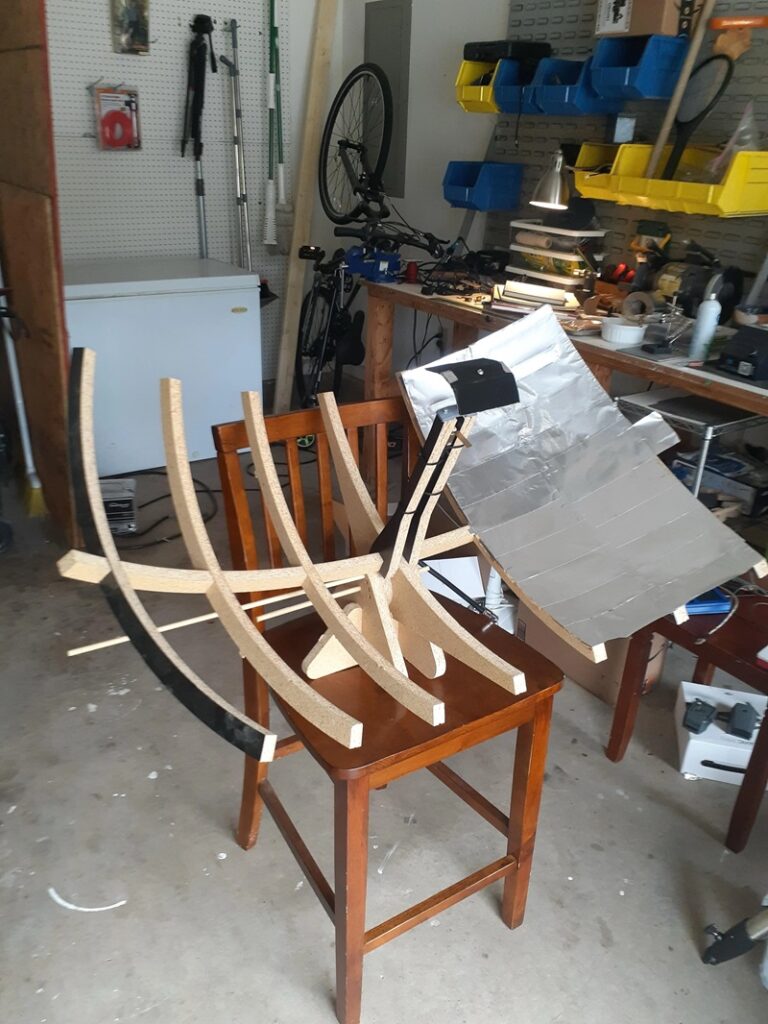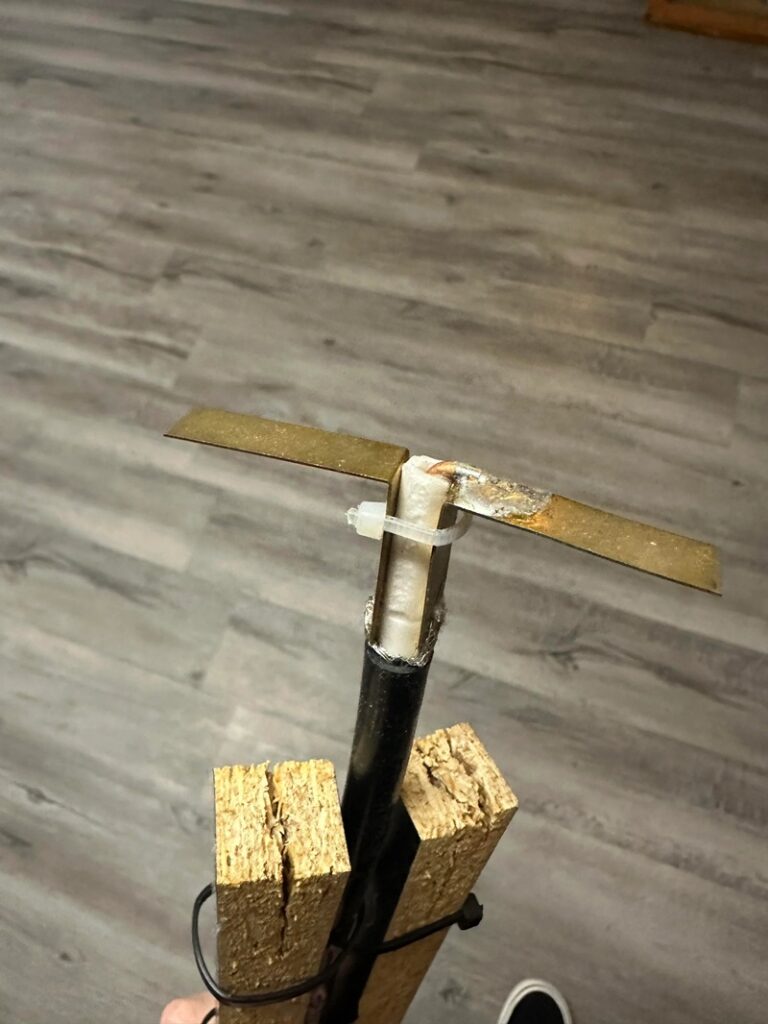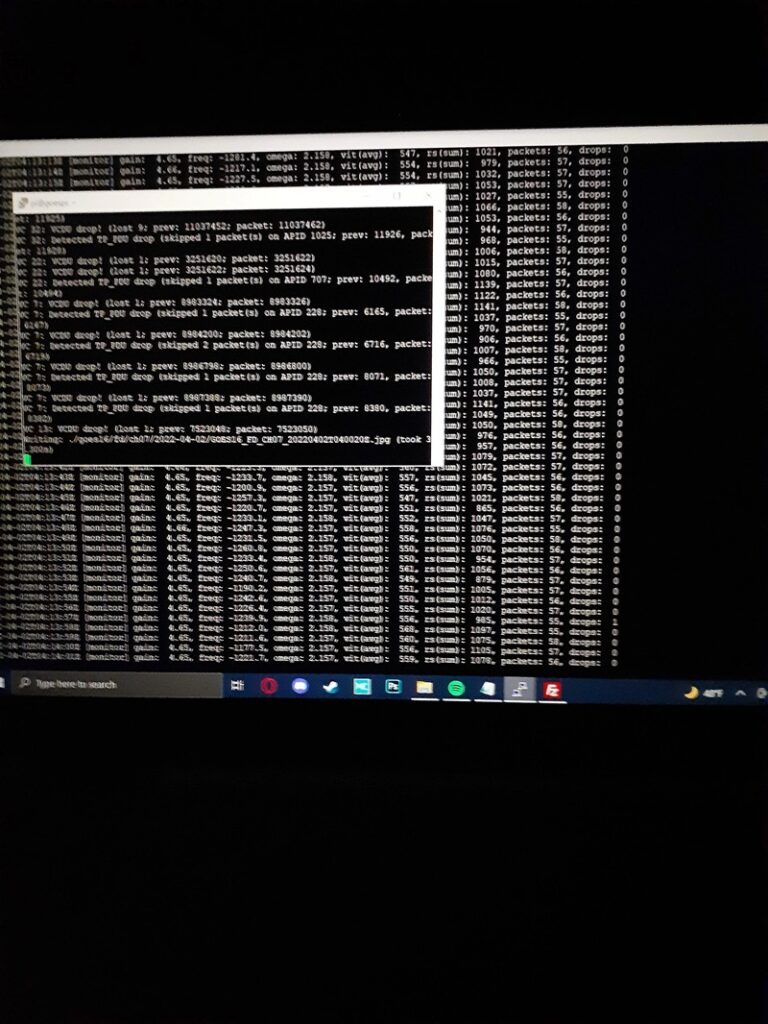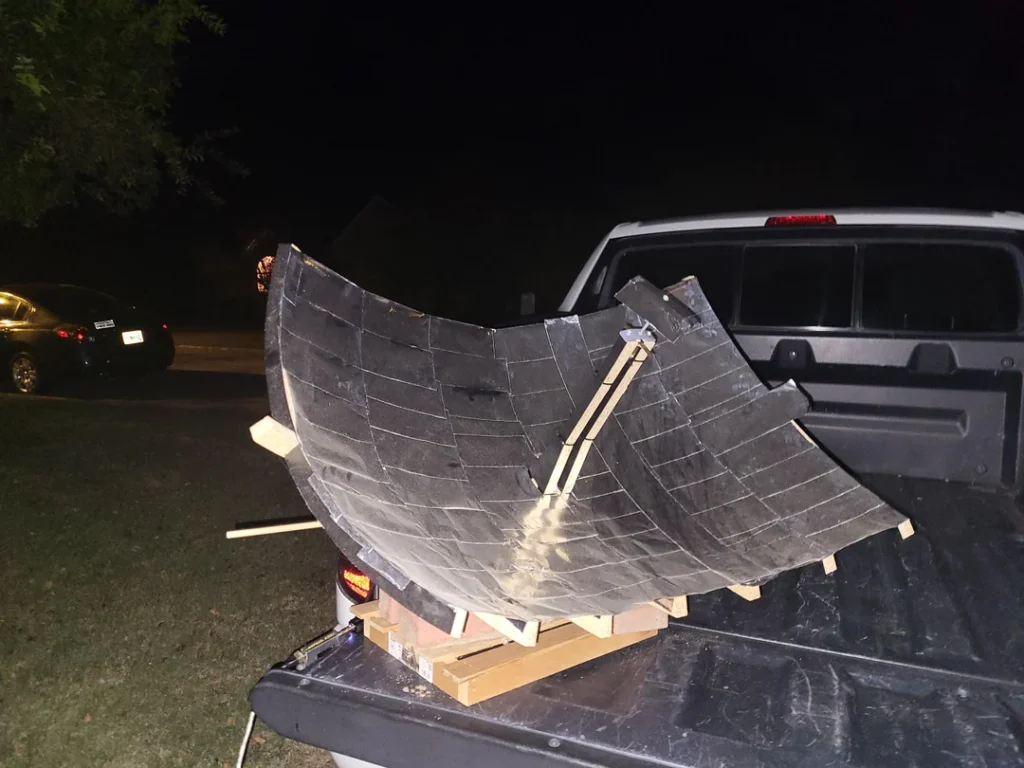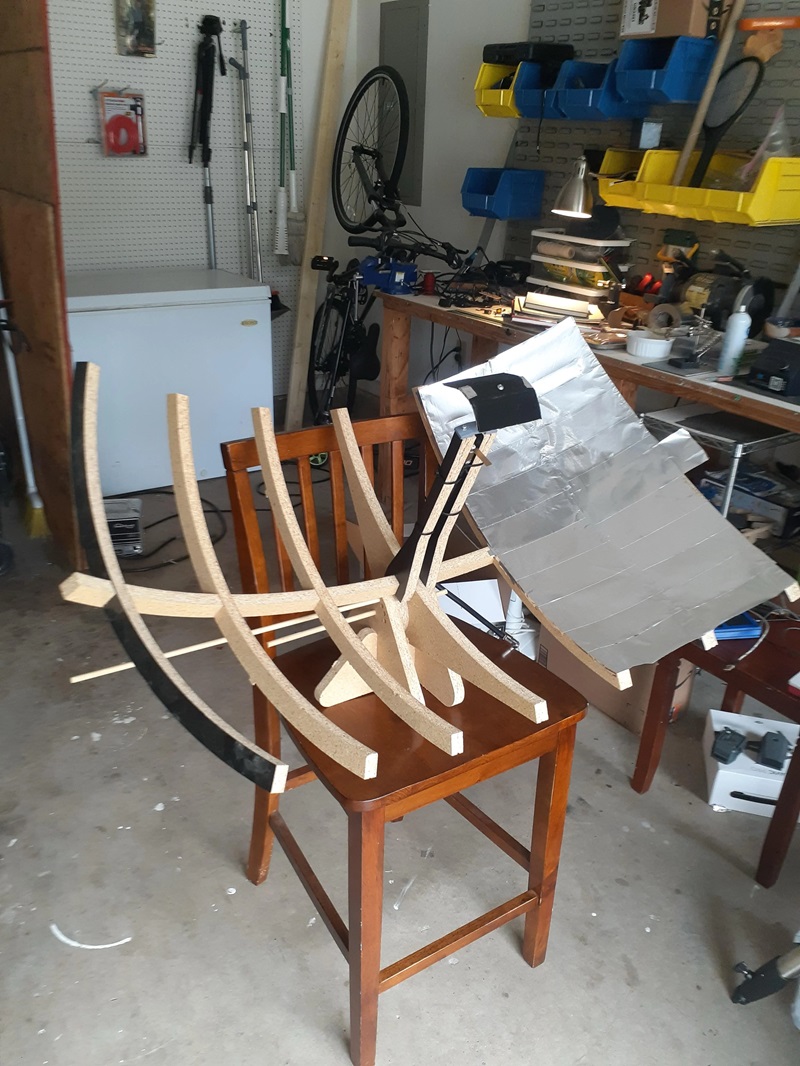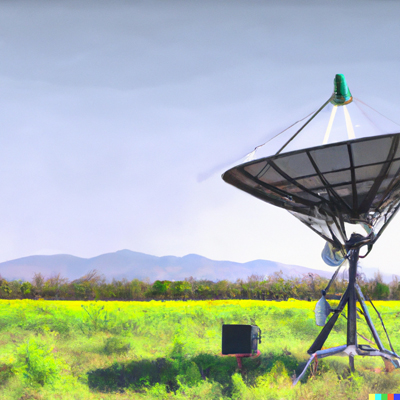![]()
A DIY GOES Parabolic Antenna (Rest in Pieces)
This blog post chronicles a unique project undertaken for a recent manufacturing final by -MrNutter- Gabriel Nutter (gabenutter at gmail.com): building a parabolic antenna specifically designed to receive GOES weather satellite data.
The creator, with no prior experience in this field, embraced a creative approach. While the design may not have been textbook perfect, it achieved functionality beyond expectations.
The build process involved several steps:
- The Dish: A CNC machine precisely cut the base structure, while originally a 3D printer and CNC machine brought the parabolic reflector to life.
- Signal Catcher: Simple yet effective, aluminum tape served as the antenna’s signal collector/reflector.
- Data Decoder: The critical task of decoding the received signal fell to a trusty Raspberry Pi running GOEStools software.
The sole commercially-sourced component? The LNB (Low-Noise Block Converter). This vital piece was salvaged from a known-functional antenna. However, its appearance left much to be desired – a stripped coaxial cable soldered to some brass L-pieces. While undeniably unconventional, it did the job! (The inner workings, however, remained a source of amusement for the creator.)
The aluminum tape seemed to work great however it had some drawbacks. He learned early on that this project turned into a solar cooker during the day and it was actually powerful enough to pop popcorn (and melt several parts)! Also, signal reception dropped to 0 when the sun was up, assuming it was interfering with my antenna due to the shiny tape.
Sadly, a recent accident resulted in the untimely demise of this innovative antenna. Rest in pieces, little antenna. But fret not, a glorious rebuild is already on the horizon! This project serves as a reminder that even unconventional, first-attempt creations can yield impressive results.
